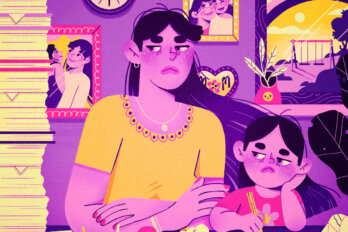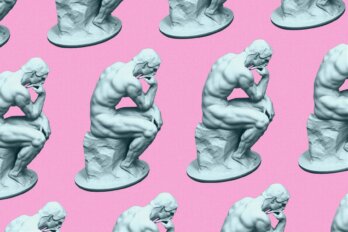Right-wing pundits have lately spent a lot of energy bemoaning the quality of today’s universities. They complain about everything from trans-inclusive language in the classroom to testing accommodations for neurodiverse and disabled students to incorporating Indigenous content into curricula. This grousing is part of the larger conservative response to recent civil rights activism, wherein so-called student “snowflakes”—represented as terminology-obsessed, identity-focused, emotionally overwrought busybodies—are derided for what critics insist are trivial concerns and commitments.
The “social justice warrior” caricature that these critics obsess over is very far from the smart, engaged, and courageous students I’ve worked with in my fifteen years as a faculty member in Canada. The academic reactionaries are particularly troubling, and their frequent insistence that these hypersensitives simply need to learn how to deal with the “real world” seems more than a little precious given that it’s often these very professors who exist at a tangible distance from their students’ experiences in the world beyond academia. I’m not sure who these professors imagine is sharing space in their classrooms, but here’s a snapshot of the students in mine.
I work with students who are juggling two, even three jobs, while trying to maintain good grades, sometimes commuting for hours a day to jobs and school, sometimes caring for children, parents, or disabled family members with little help, sometimes dealing with abusive parents, partners, roommates, neighbours, even landlords. I teach international and first-generation university students who struggle to successfully navigate its opaque social codes and expectations; I work alongside students who have a range of visible and invisible disabilities making their way through indifferent-to-hostile university personnel, physical structures, procedures.
There are still too few resources for students suffering from mental health issues, housing vulnerability, or sexual violence, and too little training for faculty and staff to help them identify and access those few that are available. The Indigenous and racialized students in my courses grapple every day with the historical and current effects of an education that misrepresents them, their families, and their communities as subhuman, uncivilized, and uneducable. I teach transgender and gender non-binary students, who are constantly told—through curriculum, university policy, and daily interactions with academic staff and other students—that they don’t exist, shouldn’t exist, are psychologically compromised, or are inconveniences to be managed.
A great many of my students skimp on food or medicine to afford rent and school, especially older learners on limited incomes. I’ve had students in my classes take up sex work in order to survive an impossibly expensive city. Some of my students are enmeshed in the legal system, from complex family custody battles to immigration difficulties to domestic violence. Some are addicted; some are helping loved ones in addiction. Some have chronic illness; some have faced terminal diagnoses. And some are just terribly lonely and isolated.
The list goes on. It would be a grave mistake to imagine that a single demographic fits any one of these scenarios, or that these students are unique to my institution or my part of the country. I try not to assume anything about them, because these assumptions are invariably incomplete and very often wrong. But one thing I do know. These students not only live in the “real world,” but, too often, they suffer in that world. They go to college or university under overwhelming pressures and make extraordinary sacrifices to succeed in their academic work. For many, it’s about improving job prospects and securing a better life for themselves and their families. Others come to our classes for moments of escape from the terrors of the “real world,” hoping—and yes, even expecting—that they will be treated with dignity.
So if a trans or gender non-binary student wants me to use a specific pronoun, how is that a problem? If a student with disabilities needs more time to finish an exam, where’s the harm? If a student wears a niqab in the classroom, I’m not sure why that should be an obstacle to her being a part of and sharing in our learning community. If a queer or racialized student offers a thoughtful argument about why I should reconsider teaching a text because of its dehumanizing representations, that doesn’t seem unreasonable to me. And if a devoutly religious student expresses discomfort about the language of a text, how is it a burden to engage those concerns thoughtfully?
I was raised working poor and remember well the terror that accompanied a bank’s foreclosure on our home when I was a teenager; I struggled to balance basic subsistence expenses with school; I’ve been threatened and physically attacked by homophobes; I’ve experienced my share of ugly anti-Indigenous slurs and bigotry. Even so, there’s no question that many of my students are dealing with much more adversity than I (or their critics) ever experienced, and they largely do so with exceptional resolve. Considering that, what does compassion cost me?
To be sure, all teachers get frustrated—just as our students get frustrated with us. Teaching is difficult at its very best, and there will always be students who challenge us more than others, classes that just don’t gel, personalities that don’t connect. And there will always be students who bring their prejudices fully into the classroom, as racialized and non-male faculty know all too well. The responsibility for a productive, meaningful learning experience doesn’t lie solely with the teacher. But so much depends on the foundations of the course and whether students feel they’re treated with a baseline of respect.
For better or worse, those of us teaching from the margins often learn how to deal with student resistance at the very start of our careers, and it seems that a great deal of the anger from these conservative academics results from the privilege of never having had their authority questioned and not knowing how to deal with it in thoughtful and productive ways. So they blame the students and a “snowflake culture” rather than their own inadequate training or ineffective teaching practice. Kindness won’t always shift things in a positive direction, but there’s no question that treating students as enemies or defectives will poison the classroom from the start.
Bringing kindness into your teaching doesn’t mean being perfect or being a pushover. Some students will flourish in our classrooms; some will struggle; some will fail their coursework, and others will step away. Being a kind teacher doesn’t mean creating a classroom where all behaviours are appropriate, or not having high and even demanding expectations. You can be kind and tough—some of my best teaching role models across the ideological spectrum were precisely that combination, and because they demanded a lot and had faith in their students’ capacity for success, I strove harder to meet those expectations. Students have a keen bullshit detector and know when they’re being condescended to; they also know when someone believes in them. In my experience the vast majority of students want to be challenged. But they want to be treated like human beings, too, and they want to know that they’re being treated fairly. If our courses are predicated on the idea that students have to leave part of their humanity at the door, then as teachers we’re failing at a fundamental level.
What always seems to come through in so many of these critical commentaries about the supposed “snowflakes” is fear. Fear of being vulnerable. Fear of looking like anything less than authoritative, of being asked to learn something new, of maybe not always knowing the answer, of perhaps even being wrong, of seeing the world through the eyes of those you’ve sought to distance yourself from—and finding something worthwhile there. To be open in this way can be scary for a teacher, especially for those who go through life with the privilege of assumed authority, but it makes for more honest teaching, and certainly better learning.
Frankly, I don’t want my classes to be gladiatorial arenas where only the strongest survive. There’s already enough cruelty in the world. Our students don’t need to be cowering supplicants, adoring acolytes, or uncritical sponges. They don’t need classrooms rooted in the arrogant belief that their experiences and contexts are meaningless, that the only Truth that matters is the one intoned by the unassailable, privileged authority at the front of the classroom. They don’t need to be anything less than their whole, imperfect, uncertain, hopeful, fabulous selves. And if a bit of generosity in our teaching can help them, if a bit more patience with their challenges can make the difference between hard-won success and crushing struggle, then it’s our duty as teachers to provide it. To do otherwise is an inexcusable moral and professional failure.






